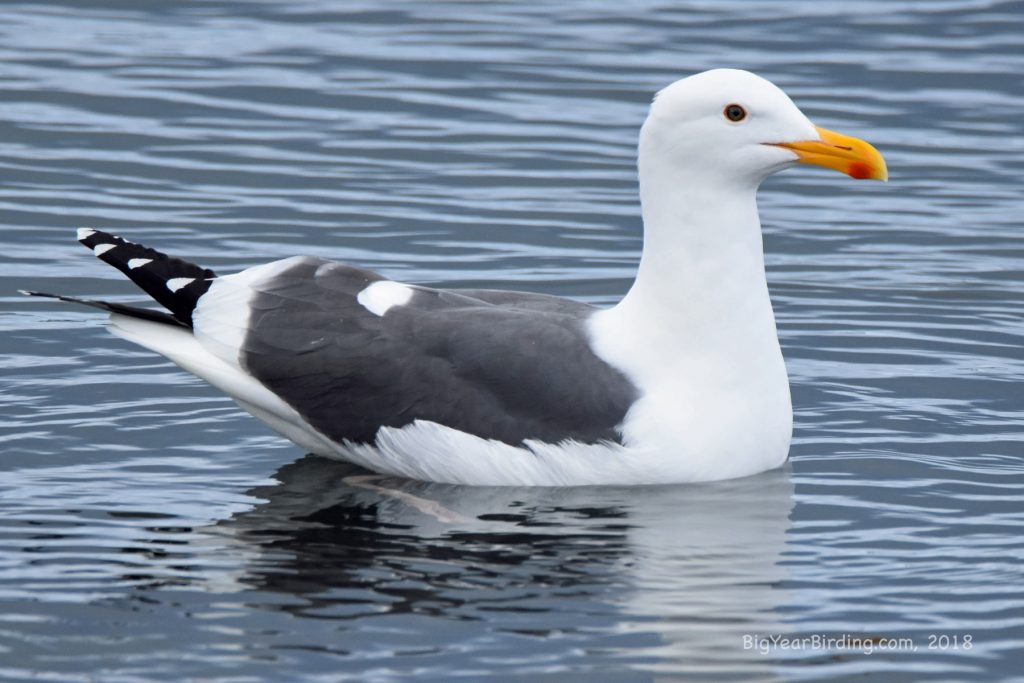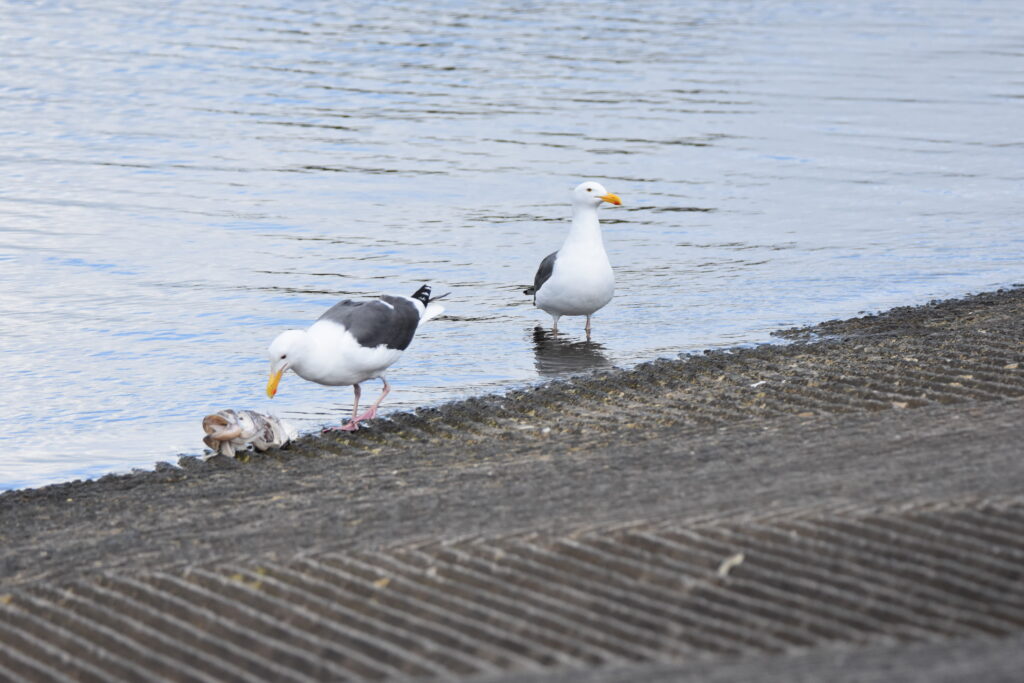
The Western Gull (Larus occidentalis) is a large and conspicuous gull species that is found along the Pacific coast of North America. This species measures approximately 22-26 inches in length and has a wingspan of about 50-54 inches. Western Gulls are heavy-bodied birds, with males weighing between 2.2-3.5 pounds and females weighing between 1.8-3.1 pounds.
The Western Gull can be identified by several distinguishing field marks. Adult birds have a white head, neck, and underparts, with gray wings and back. They have a yellow bill with a red spot near the tip and pink legs. Juvenile birds have a mottled brown and white plumage and a dark bill. One of the most noticeable features of this species is their piercing call, which is often heard as they fly overhead.

Western Gulls are year-round residents of the Pacific coast, ranging from British Columbia to Baja California. During the breeding season, which occurs from April to July, these birds can be found nesting on offshore islands, rocky cliffs, and man-made structures. They are opportunistic feeders and will eat a variety of food, including fish, crustaceans, and carrion. Western Gulls are also known to steal food from other seabirds and will scavenge for food in urban areas.
While Western Gulls are primarily non-migratory, some individuals have been known to travel long distances during the non-breeding season. These birds have been observed as far north as Alaska and as far south as Central America. In some cases, Western Gulls may migrate inland to freshwater habitats during the winter months.

Unfortunately, Western Gulls face a number of threats, including habitat loss and pollution. These birds are also vulnerable to predation by mammals such as raccoons and foxes, and their eggs and chicks are often targeted by corvids. Conservation efforts are underway to protect Western Gulls and their habitats, including the establishment of protected breeding colonies and the cleanup of coastal pollution.
